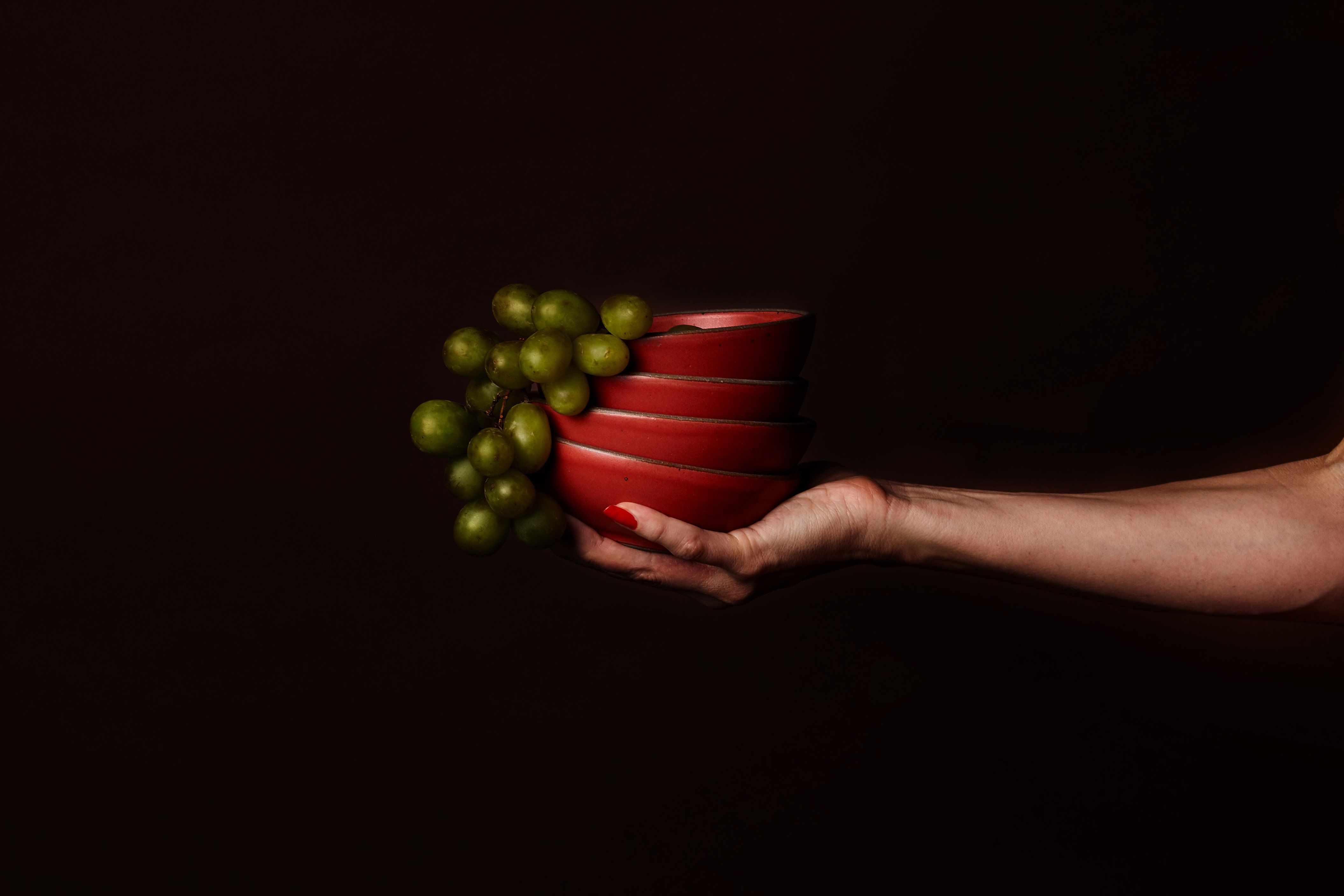
On the Color Red
Here in Asheville, it’s impossible to overlook the changing of the leaves. The trees look like fur on the rolling mountains. During autumn, the whole forest produces a magnificent gradient of yellows, oranges, reds, brown and purples, which stretch as far as the eye can see. The reds are stunning— coming in a glorious array of hues from blood red crimson to pale rose. Driving on the parkway, the mountains have a kaleidoscope effect, popping and blooming with each passing day into new and wild shades of fall colors. The chlorophyll breaks down to reveal these spectacular pigments that were there all along. Tulip poplars and beech trees radiate yellows. The Japanese maples ooze red. It’s a sight to behold. Which brings me to the topic of today: Red.
It’s the pop in your favorite lipstick, the depth in a dramatic sunset, the power in the world’s most revered paintings, and the life force flowing through your body. It is symbolic of war, love, life, passion, power, danger, vitality and luck. Red is a color of ignition. It's the first color, blood, a blushing baby's cheeks. For that reason, it’s difficult to know where to begin to write about it— to do it justice. It represents the beginning and end of cycles and it’s got a hell of a lot of power. Perhaps, there is no more dynamic and immediately impactful color, literally (optically, red has an affect on our eye making us believe it is coming toward us— hence, stop signs, ambulances, etc.) This is why we had to give red it’s moment in the spotlight.
The symbolic meaning of red is vast, and conjures up different emotions and meanings depending on where you’re at in the world. In Eastern cultures, it symbolizes good luck and happiness. According to Chinese philosophy, red is associated with the element of fire, and is considered highly auspicious. Centuries of dynasties were advised by astrologers to use the color in ceremonies, weddings, coronations, garb, and offerings to bring prosperity to their reign. The actual pigment popular in this culture is cinnabar, and was the color of traditional Chinese lacquerware. Unlike the common perception of the sun being yellow, In Japan, it is thought to be red, and is represented as the circle on the flag.
In western cultures, its symbolism lies more in power — weighted and leaning toward danger rather than felicity. It is associated with sex, passion, and emergency. Although, it’s so much more than these three things, making this complex color a bit of a puzzle to define.
In the west, Carmine was the pigment of choice, the brightest red on the market for centuries. It was used by Aztecs and Incans, and brought to Europe by Spanish conquistadors. It's been used for paint, food coloring, and clothing dye, even though it's source is the cause of stomach-ache for some. Carmine comes from the cochineal bug, and we still use it today to blush our cheeks and color our strawberry flavored candies. Chances are high that the lipstick you swiped on your kisser this morning is colored with the blood of these cactus dwelling insects.** Cherry coke is full of it, as "color additive E120," and the Red Waistcoat in Cezanne's "Boy in a Red Waistcoat" is most certainly bug ichor. Relax. Breathe easy— It's not in our pots.
On a more serious note, this is what interest me most about red — It’s seeming indifference to belong within a masculine or feminine code. It hangs in the balance, and is represented equally, throughout history, as being both. It’s war paint, mensuration, kingly robes, and roses. It’s the robe of a Tibetan monks and the color the tent women once gathered in during their cycle. It’s a sexy dress and lipstick, and it’s the tie on your local republican running for office. It doesn’t play around with taking sides, because its power is too magnificent. Perhaps, this is the reason why it’s difficult to write about red. Its intensity supersedes its meaning. Like the feeling before the thought.



